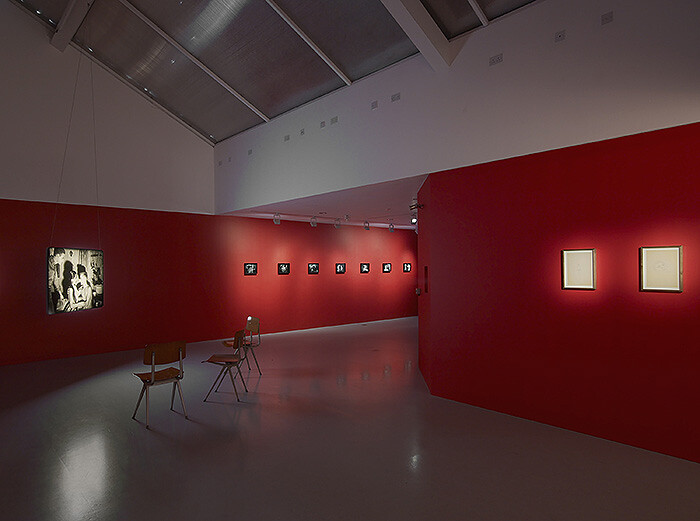The nouveau romanciers of France in the 1950s attempted to write a new sort of novel, as their name signaled: portraits of characters that would be comprised entirely of external effects, with none of the glimpses into interiority of the conventional novel—characters’ private thoughts and feelings—which the group argued were falsely given. How can I know what you are thinking, whether you sit across from me in reality or on the page? Writers such as Georges Perec and Alain Robbe-Grillet created characters through their possessions and attributes, and through what could be externally observed of them. The work of Ben Rivers, who, working almost exclusively in 16mm and Super 16 film over the past 10 years, has similarly focused on characters—he has referred to his films as “portraits”—with scant provision of commentary or an angle on how they should be seen. Narrative, voiceover, even reaction shots: these are all absent. What Rivers’s films provide instead are long shots of his subjects, who have mostly chosen to live differently—as hoarders or alone in the wilderness—so that a sense of them as people arises from their own actions and daily routine.
Rivers’s latest film, Things (2014), is particularly influenced by the nouveau roman, though it is also a departure for the artist. The title nods to Perec’s Les choses (1965), and the film includes shots of Robert Pinget’s Fable (1971), which is also the source material for the drawings that accompany the film in its current exhibition at Kate MacGarry, London. In both the show and the film he turns his camera and method on himself: Things is a film of him, or, more accurately, the things in his apartment, copies of which also hang in the gallery, the walls painted the same oxblood color as his home. The film, projected against a hanging screen in a corner of the L-shaped room, builds a (self-selected) portrait of the artist himself through the pictures, objects and books he has collected, and the elements of his life—his girlfriend reading, the view outside his window—culminating in a 3D digital rendering of his apartment that is partially stripped of all the information that, until now, had proved so important to the beginning of the film. This was in some ways a technical consideration—the video game designer whom Rivers commissioned to make the rendering could only accommodate so much visual information—but it turns the film into one of two halves: the first, a personal history, staged through what he has collected along the way (carved stone heads, movie stills, and old, inscrutable photographs); the second a non-place, antipathetic to these things, and which, in its eerie artificiality, looks distinctly fictional—a stage set of what the home of a “creative artist” might be.
This question of fiction and reality, or reality and its representation, runs throughout the work here (including a very funny sequence filmed in Rivers’s garden where a squirrel, first scared and then intrigued by a squirrel made out of coconut, eventually decides to eat it), as well as throughout his work in general. How can the fictional have a look? In what can loosely be characterized as Rivers’s wilderness series, where he focussed on single figures and families who chose to live off the land, the material rang out with romantic and cinematic avatars: men with craggy faces and long beards poking fires with sticks, or children running free and barefoot among mountainous vistas and under looming skies, as in, respectively, Two Years at Sea (2011) or Ah, Liberty! (2008). Rivers amped the resonances of these images up by shooting on 16mm and Super 16, so that the graininess of the film added to the roughness of the life pictured, and the whiff of obsolescence of the medium chimed with the characters’ rejection of modernity. The result were films that deliberately confused fiction and documentary: films that acted cinematic, but which were the result of living with and getting to know different people. They were portraits, made with a literary methodology: aiming almost to be translations of their world-views, as accurate as he could make them.
In Things, the distinctive last section undoes the work of accumulation of the first parts. It trades Rivers’s desire to know and represent someone for a kind of purgatory of a nonhuman perspective, in which the camera dollies more evenly around the space than a real person ever could. Siegfried Kracauer, in his famous essay The Mass Ornament (1927), wrote about the spectacle that could not be seen by the human eye but only by the camera, and a similar overriding of the human is at work in digital renderings like these. Things adds a strange codicil to Rivers’s stylistically (and materially) coherent body of work: it severs the link to the documentary just at the moment when he could most genuinely affirm to know the thoughts of his subjects. It is thus on the one hand another excellent Ben Rivers film, but also shows the artist working against himself, indeed even switching for the first time into the digital to see how “representation” there differs.









